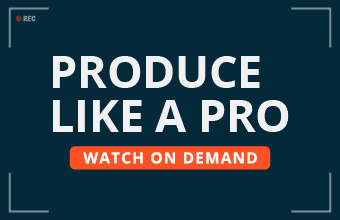They say content is king, and no truer words have ever been spoken. In today’s digital world the amount of content available to us is truly epic.
But how do you decide upon which sources to rely on? Those who stand out from the crowd are those whose content is superior and provide their audience with exceptional takeaways.
So what to do if you’re posting your best and most creative content and are still not getting the kind of engagement you expect…or need? This is where content amplification comes into play. On one level this is just another catch phrase from the digital world of marketing and communications, but it’s also a necessary step in increasing our audience and reaching the top of the content heap.
Content amplification is the process of pairing valuable content with other tactics, including paid approaches, to get it out there and consumed. This method can help ensure that marketing professionals get their content in front of the right audience using many different platforms including websites and social media channels. This means that you might have to spend a little to make those necessary gains in readership.
Here are eight helpful tactics to amplify your content:
Engage influencers
The best way to engage influencers is to do your due diligence — find out who is making waves in your industry. Once you’ve identified these individuals, start by tagging or mentioning them in your posts where relevant. Give credit where credit is due. If you get some feedback, ask them if they’d be willing to become contributors to your efforts. If they agree, half the battle is already won!
Understand the value of your influencers
The best way to get these people engaged is to provide value. A tweet here and there that mentions them is not enough. Find something your influencer is involved in or supports. For example, if one of them has written a book on a relevant topic, suggest a contest where you give away copies, invite them to speak at a webinar you host, or have them as a guest speaker at one of your events.
Use the Skyscraper Technique
This technique is very simple, and the best part is you don’t have to be an SEO expert to make it work. To start, you’ll need to find top performing content of the same subject as your own. You can do this by using a few simple tools such as a Google search, or for more in-depth analytics you may want to use a good media monitoring firm. Once you know which posts are being shared the most and their level of quality, you’ll then have to one-up all of them by creating better content. The final step is to get as many people or organizations as possible to link to your new content. Since you’re writing about a subject that’s already well-read, you know you’ll already have an audience.
Engage with niche communities
While traditional and digital PR are also very powerful ways to share content, providing genuine value to relevant niche communities — and getting them engaged — can be extremely rewarding. Plus, if your content is well-received, there’s always a chance that other blogs and media publications will curate your content.
Promote your content by using native advertising
Another catch-phrase in the PR and marketing world is native advertising — a paid placement of content that fits with the layout of the site it’s on, but without a clear call to action. The reality is that content that entertains and informs people (without coming off as a blatant ad) usually performs much better than a traditional banner ad. For example, in 2014, the New York Times sold $18-million worth of native advertising. The ruler of this form of advertising, though, is Buzzfeed, whose monthly unique visitors range from 175M to 200M. Brands know this, so they’ve create (or get Buzzfeed’s native content creation team to create) native advertising that looks and feels exactly like original BuzzFeed content.
Create big content
Big content has been described as content that takes a lot of effort, is not necessarily long-form and also breaks the mold of some traditional content types. If you have whitepapers or guides, this could be for you. Don’t worry so much about your blog posts, infographics and so forth, concentrate on your big content and getting them into relevant online publications that could find a use for this data. This could lead to significant earned media and credibility.
Use Twitter Lead Gen cards
Twitter’s lead generation cards can be a lucrative source of high-quality sales leads for your organization. With these you only pay when users interact with your ad, and the call-to-action feature allows the capturing of a logged-in user’s general information like name, email, and screen name. The secret to maximizing the value of Twitter’s lead gen cards is to make sure your leads are hyper-targeted.
Save special content for those who share
If you have an e-book or some kind of downloadable piece of content you feel is especially interesting, encourage your contacts to share your content in order to be able to download the file.
These suggestions should assist with your efforts but keep in mind, you should think first about your content promotion strategy before you create content. Ultimately, it may be better to spend time focused on creating fewer, high-quality pieces of content and more time on promoting that content.










